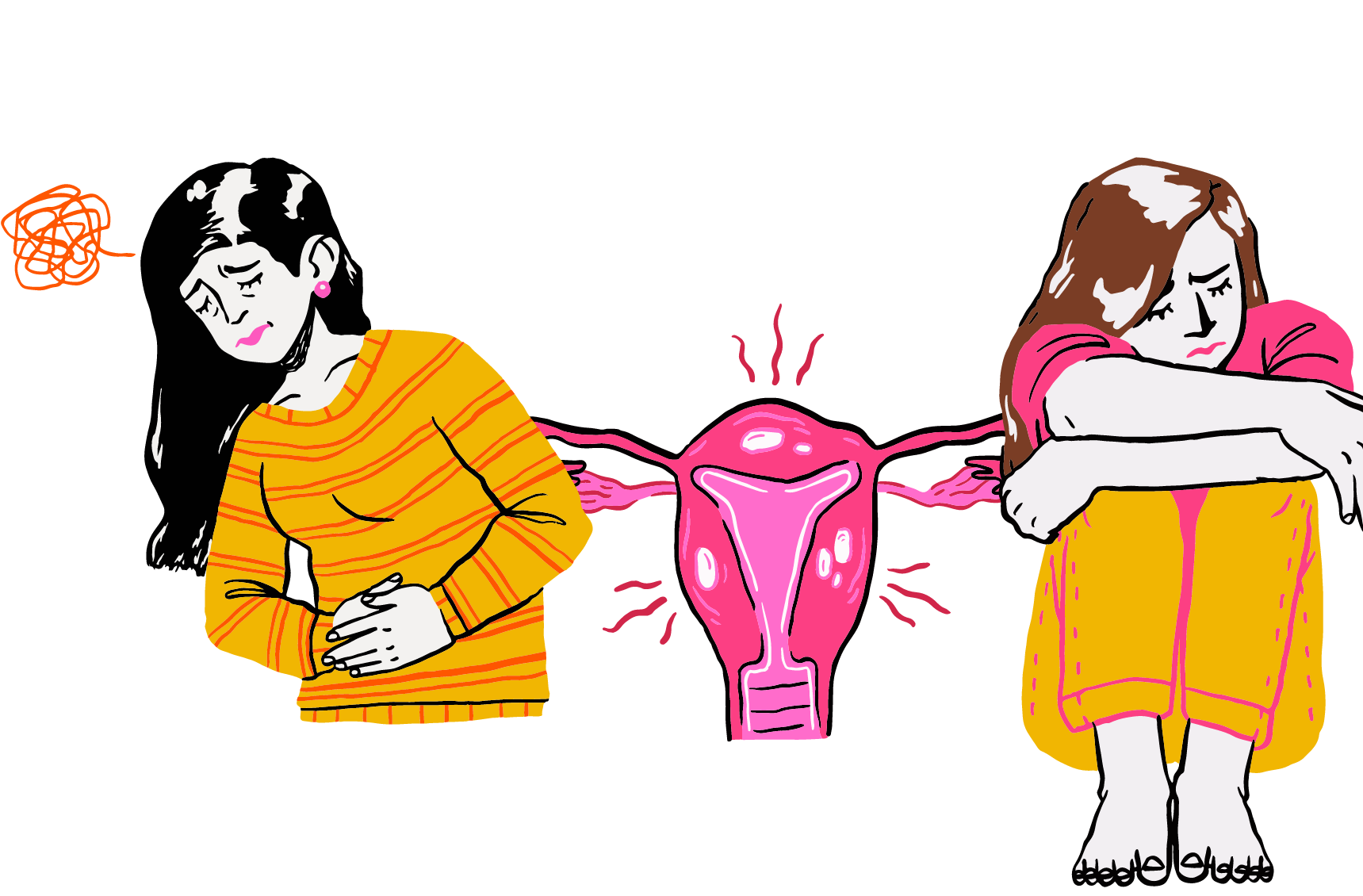Endometriosis

What is endometriosis?
Endometriosis is a common condition that occurs when tissue similar to the lining of the uterus grows outside of the uterus, such as on the ovaries, fallopian tubes, or other pelvic organs. This tissue can cause inflammation, pain, and sometimes infertility.
Who's at risk for endometriosis?
Endometriosis can affect people of all ages, races, and ethnicities, but it is more commonly diagnosed in people who have a family history of the condition, those who have never given birth, and those who have menstrual cycles shorter than 28 days or longer than 35 days.
What causes endometriosis?
The exact cause of endometriosis is unknown, but it is believed to be related to a combination of genetic, hormonal, and immune system factors. People with endometriosis may have abnormal levels of hormones such as estrogen, which can contribute to the growth of endometrial tissue outside of the uterus.
How does endometriosis start?
Endometriosis may start with symptoms such as pelvic pain, painful periods, and infertility, which may worsen over time and may be associated with other symptoms such as bloating, constipation, and painful intercourse.
What are the symptoms of endometriosis?
The symptoms of endometriosis may vary depending on the location and severity of the endometrial tissue growth, but may include:
- Pelvic pain or discomfort, especially during menstrual periods
- Pain during intercourse
- Infertility or difficulty getting pregnant
- Abnormal bleeding, such as heavy or irregular menstrual periods
- Bloating, constipation, or other digestive issues
- Fatigue, nausea, or other general symptoms
How is endometriosis diagnosed?
Diagnosing endometriosis involves a comprehensive evaluation of a person's symptoms, medical history, and physical exam, as well as imaging tests or laparoscopic surgery to visualize the endometrial tissue growth and confirm a diagnosis.
How can endometriosis be treated?
Treatment for endometriosis may involve a range of interventions, including:
- Pain medication or hormone therapy, which may help manage symptoms such as pain and abnormal bleeding
- Surgery, such as laparoscopy, to remove endometrial tissue growth and improve fertility
- Fertility treatments, such as in vitro fertilization (IVF), for people who have difficulty getting pregnant due to endometriosis
What complications may occur with endometriosis?
If left untreated or poorly managed, endometriosis can lead to a range of complications, including:
- Infertility, which may occur due to damage to the reproductive organs or hormonal imbalances
- Adhesions, which may occur when scar tissue forms around the endometrial tissue growth and causes organs to stick together
- Ovarian cysts or other reproductive organ abnormalities
- Chronic pain and other quality of life issues
How can I prevent endometriosis?
Preventing endometriosis is not always possible, but some strategies that may help reduce the risk of developing the condition include:
- Maintaining a healthy weight and lifestyle, including regular exercise and a balanced diet
- Avoiding exposure to environmental toxins and chemicals that may disrupt hormonal balance
- Taking hormonal contraceptives, which may help regulate menstrual cycles and reduce the risk of endometrial tissue growth
Long-term management of endometriosis
Managing endometriosis over the long term involves ongoing monitoring of symptoms, regular healthcare provider visits, and following a treatment plan as prescribed by a healthcare provider. It may also involve making lifestyle changes to manage symptoms and participating in ongoing therapy or support groups to manage underlying psychological or emotional issues.
What is recent research saying about endometriosis?
Recent research in endometriosis has focused on improving diagnosis and treatment options, as well as understanding the underlying mechanisms of the condition. Some of the promising areas of research include:
- Biomarker development, which involves identifying biological markers in blood or tissue samples that can be used to diagnose endometriosis and monitor disease progression
- Novel treatment options, such as targeted therapy or immunotherapy, which may help manage endometriosis by targeting specific immune system pathways that contribute to the condition
- Development of non-invasive imaging techniques, such as MRI or ultrasound, which may help improve the accuracy of endometriosis diagnosis without the need for invasive procedures
Where can I go for more information on endometriosis?
If you or someone you know has been diagnosed with endometriosis, it is important to seek help from a healthcare provider who specializes in the treatment of the condition. The following organizations also provide information and resources on endometriosis:

